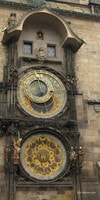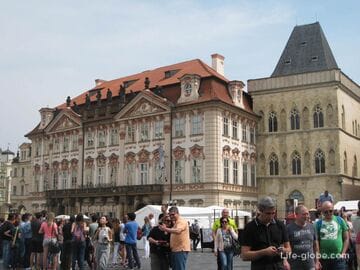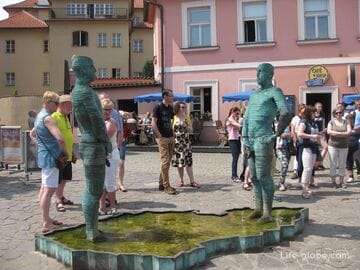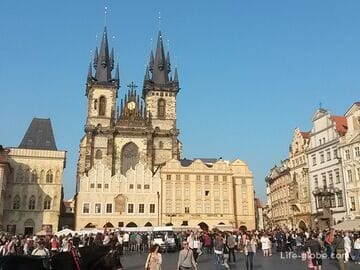Prague Chimes (Pražský orloj / Orloj clock) - the famous medieval astronomical clock in Prague, which is one of the symbols of the city and has moving figures showing the performance during the battle of the chimes.
Full name of the watch: Prague Astronomical Clock.
The chimes are also known as the Orloj Clock, the Prague Orloj, the Old Town Orloj or the Old Town Chimes and the Old Town Astronomical Clock (Staroměstský orloj).
The astronomical clock was first installed in 1410 on the south side of the tower The Old Town Hall (Staroměstska radnice), located in the heart of Prague on the famous Old Town Square (Staroměstske naměstí). Hence the name of the clock "Old Town".
The creation time of the watch makes it the third oldest astronomical clock in the world and the oldest clock that still works.
The watch was created by the watchmaker Mikulash from Kadani according to the project of the mathematician-astronomer Jan Shindel. Subsequently, the watch was improved and supplemented.
To accommodate the clock, a special stone extension was attached to the tower of the town hall, in which the entire mechanical clock system was located.

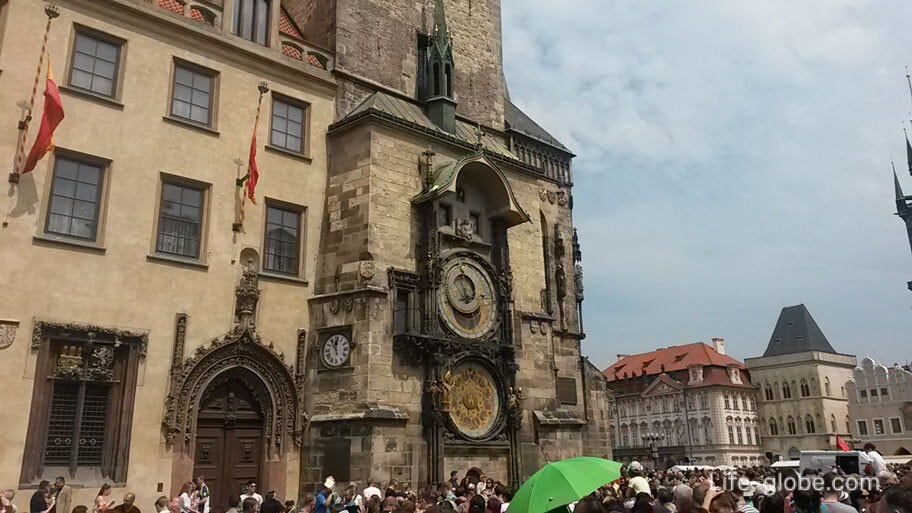
The Eagle watch consists of two main components arranged vertically. In the center there is an astronomical dial that shows the Old Czech, Babylonian, Central European (modern) and sidereal time, as well as the time of sunrise and sunset, the position of the Sun and Moon among the constellations included in the zodiac circle, and the phases of the Moon. Under the astronomical dial there is a calendar dial that allows you to determine the day and month of the calendar year, the day of the week, non-working days, as well as permanent holidays of the Christian calendar.
The calendar plate in the clock was replaced by a copy in 1880. The original, made by Josef Manes, is kept in the Prague City Museum.
The clock is decorated with sculptural figures and figures with moving parts, which show the performance during the chiming of the chimes and are the third component of the Prague Chimes.
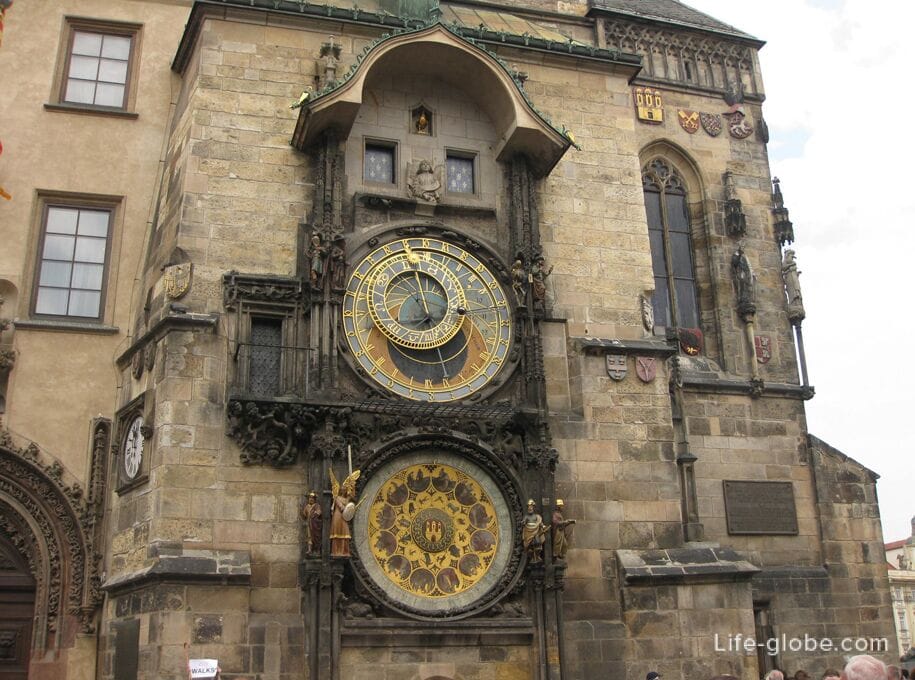
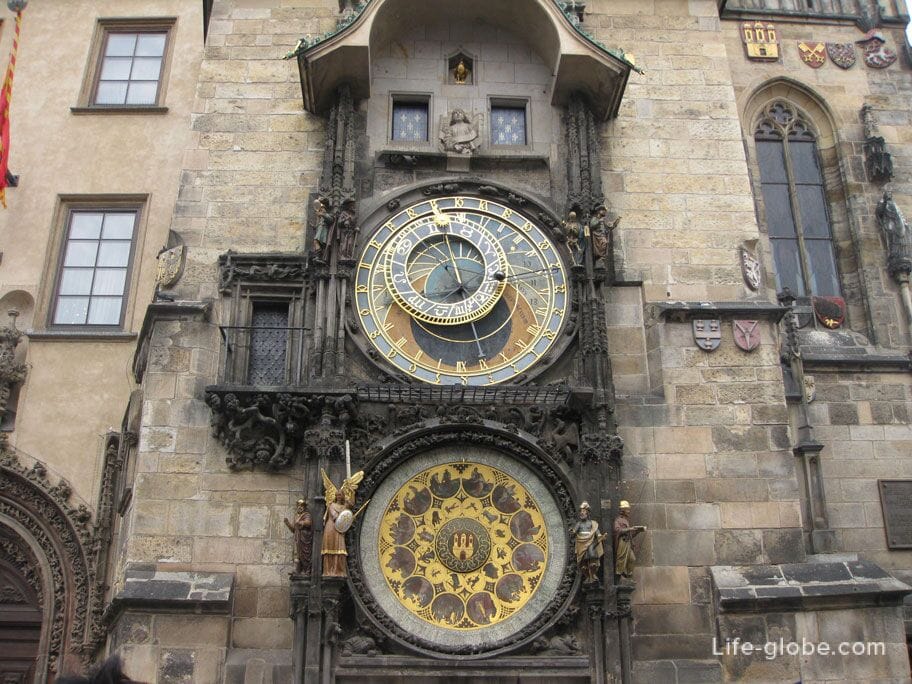
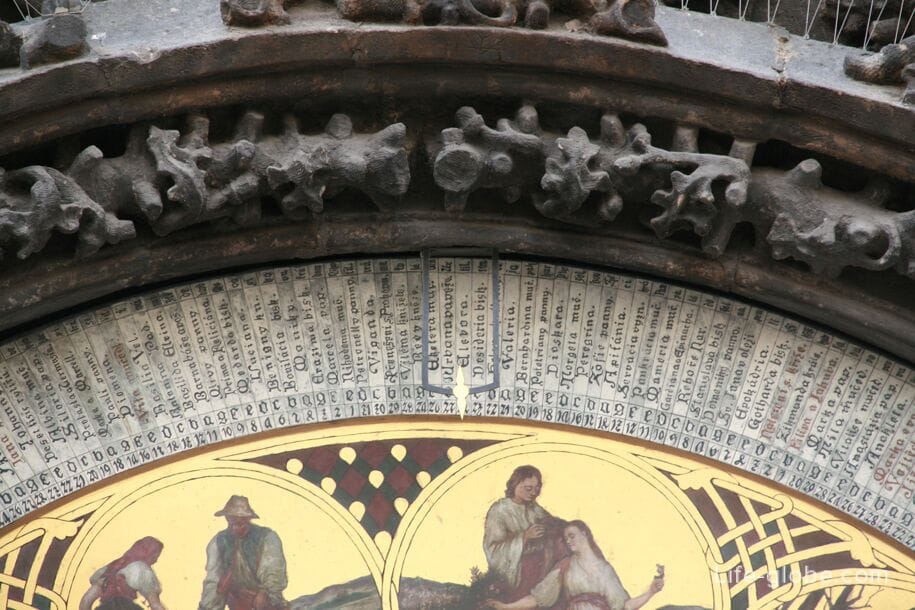
Presentation of the Prague Chimes
The most famous and visited is the time when the Prague Chimes, during the battle, show a representation of moving figures.
In the two upper windows of the clock, 12 apostles appear, who replace each other.
Above the stone motionless sculpture of an angel, located between the windows of the 12 apostles, there is a figure of a golden rooster, which symbolizes life and crows at the end of the procession of the apostles. The gilded figure of the rooster itself is motionless, it was added to the astronomical clock in 1880-1882, along with the rooster's singing, in which the sound is created by compressing the bellows when closing the windows.
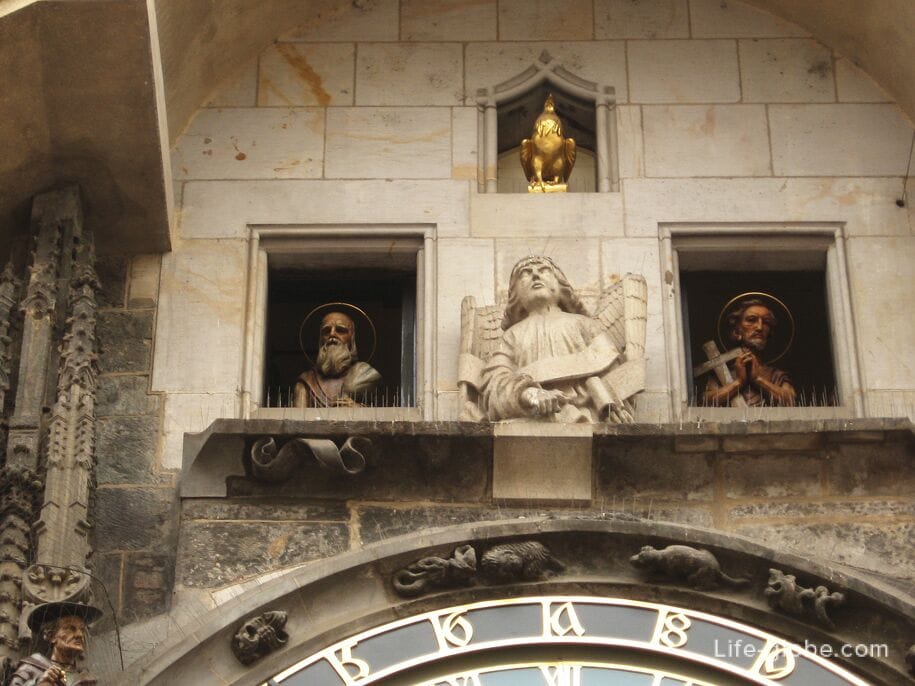
Other sculptures located on the sides of the astronomical dial are also involved in the performance.
On the right side of the dial is a figure of Death in the form of a human skeleton, which rings, turns an hourglass and indicates to the Turkish figure standing next to it (embodies lust) that his time has expired.
On the opposite side of the dial (left) there are figures of Vanity and Avarice. Where vanity is the leftmost figure depicting a person looking into a mirror that he holds in his hand. The vanity figurine nods while looking in the mirror during the performance. Next to vanity is avarice - a figurine depicting a man holding a bag of money in his hand. Avarice moves his head disapprovingly during the performance and shakes the bag.
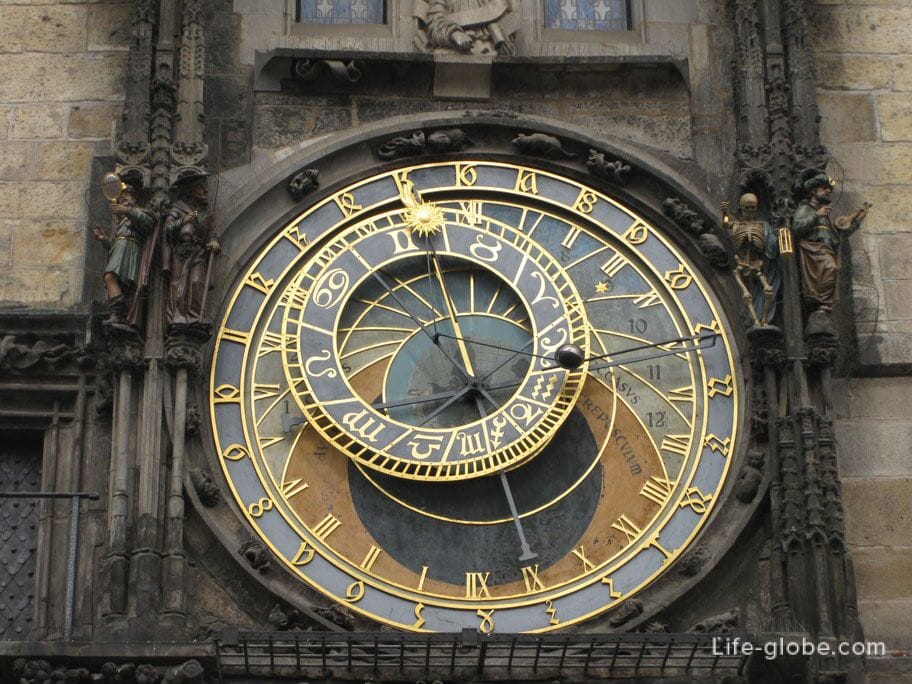
Figurines of Death and the Turk
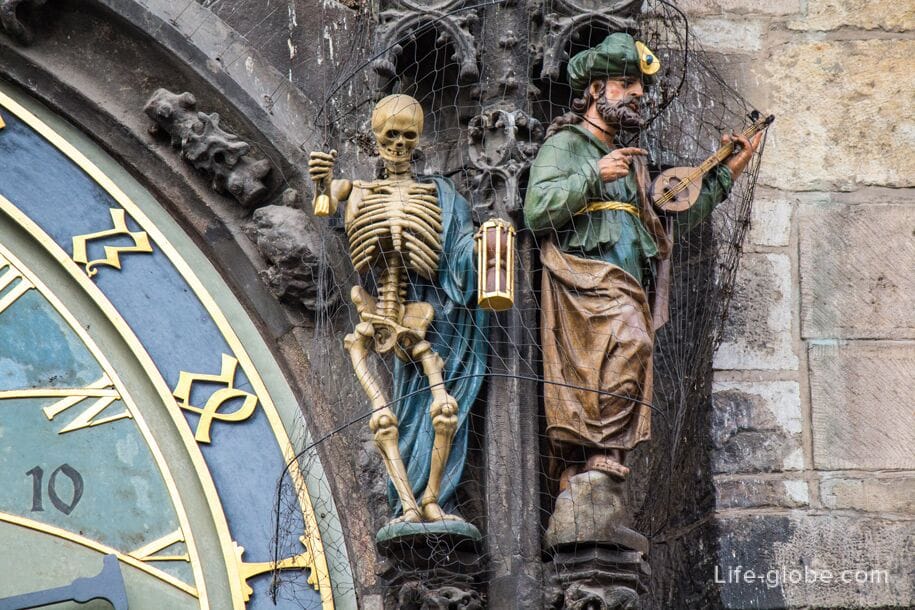
Figures of Vanity and Avarice
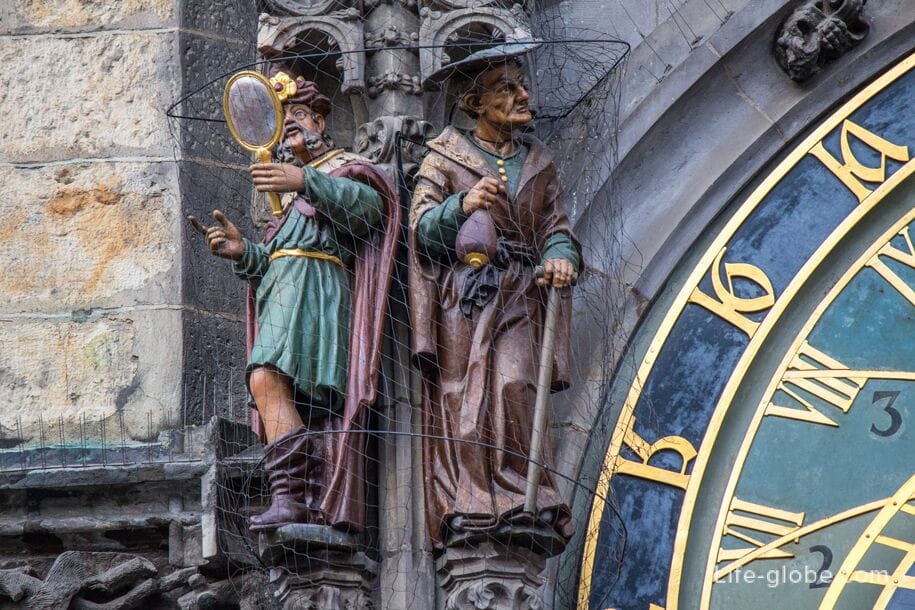
Below, on both sides of the calendar dial, there are figures of the Philosopher, Archangel Michael, Astronomer and Chronicler. These figures do not move and do not take part in the performance.
The spear of the Archangel Michael figurine originally indicated the date on the calendar dial, but after Josef Manes painted and turned the second calendar dial (the original one has not been preserved), the date pointer is located at the top of the dial. Therefore, most likely, the archangel on the clock has been placed since the introduction of the calendar. Probably the oldest dated report identifying the first archangel figurine on the chimes dates back to 1787.
A wooden polychrome figure of a philosopher with a pen and a parchment scroll appeared on the clock in its current form only since they were modified after the Second World War. By Wojteh Suharda.
The wooden polychrome figure of an astronomer with binoculars originally depicted one of the Prague citizens, and only after the Second World War Wojteh Suhard added a telescope to the figure.
The wooden polychrome figure of the chronicler with the book in its current form was made by Voytech Sukhard after the Second World War.

Video of the battle of the chimes with an Eagle
During a fire in May 1945, the astronomical clock was badly damaged and all the figures of the astronomical clock were destroyed. After the astronomical clock was restored and at the same time slightly modified. The original figurines of the early Baroque period are partially preserved and are in the Prague Museum.
You can distinguish the figures of the 12 apostles in the representation of the Prague Chimes by the attribute that each of them holds in his hands:
- Saint Peter with the key. He is considered the prince of the apostles and the first pope in the history of the church, and even at the Old Town Chimes he is the first to start the parade of the apostles. He was called to become a "fisherman of the people", so he is the patron saint of fishermen. Christ gave him the key to the Kingdom of Heaven, which became his attribute;
- St. Matthew with an axe. The axe is a symbol of St. Matthew, because during his martyrdom his head was cut off. He is the patron saint of construction craftsmen, confectioners and tailors;
- Saint John (Jan) with a chalice. The evangelist apostle Saint John was first a disciple of John the Baptist, and then of Jesus Christ. He is the patron of officials and notaries, as well as sculptors, painters, scribes, writers, booksellers, printers, bookbinders and engravers;
- Saint Andrew (Ondrej) with an X-shaped cross. He was a fisherman and the first disciple of Christ. He is the patron saint of farmers, fishermen and brides. An X-shaped cross accompanies him, because he was tortured on such a cross. St. Andrew's Day was considered the most important prophetic day of the year;
- Saint Philip with a cross. The Holy Apostle Philip lived in the first century. He earned his living by fishing, and later became one of the first followers of Jesus Christ and preached the gospel in Asia Minor. He is the patron saint of hatters, tanners, confectioners and shopkeepers;
- Saint Jacob (James) the Younger with a stick. Saint James was a beloved disciple of Jesus Christ. He was martyred, according to the Golden Legend, he was stoned and beaten with a stick, which became his attribute;
- Saint Paul with a sword. The Apostle Paul of Tarsus or Saul, through whom Christianity began to spread among the pagans, is often depicted with a sword. He is the patron saint of fear, weavers and rope makers;
- Saint Thomas (Thomas) with a spear. He was a builder and a bricklayer, and later, perhaps, he also earned a living by fishing. As one of the disciples of Christ, he is often called "the unbeliever Thomas." He is the patron saint of architects, masons, builders, surveyors, planners, carpenters and theologians;
- Saint Simon with a saw. He was also called zealous, spreading the gospel and suffering a martyr's death when he was first crucified and then hacked to death with a saw, which thus became his attribute. He was the patron saint of loggers, dyers and tanners;
- Saint Jude Thaddeus (Judas Thaddeus) with a cup. Saint Judas Thaddeus was a faithful follower of Jesus Christ, who is often called generous. He is a patron in dire need and a defender in desperate situations;
- St. Bartholomew with skin. According to legend, he came from Cana of Galilee and spread the gospel in Asia Minor and the Arabian Peninsula. According to legend, he was sentenced to the Persian death penalty, i.e. skinned and crucified. He is the patron saint of butchers, tanners, fur hunters, shoemakers and tailors;
- St. Barnabas with a stone. He lived in the I century and was one of the first disciples of Christ. Originally from Cyprus, he spread the gospel mainly in Asia Minor and Cyprus. Legend describes his death by stoning. He is the patron saint of destructive fires, as well as coopers and weavers.
Practical information
You can see the presentation of the Prague Astronomical Clock for free from the Old Town Square.
The performance takes place every hour from 9:00 to 23:00.
You can also look inside the Prague Chimes, where you can follow the movement of the clock mechanisms and see the 12 apostles "from the back". To do this, you need to visit the interior of the Old Town Hall, which includes: a chapel with a mechanism of Prague chimes, Executive halls, dungeons and an observation deck at the top of the Town Hall Tower. Visits to the interior and the observation deck of the Old Town Hall are paid. Learn more about the Old Town Hall, its interior and observation deck...
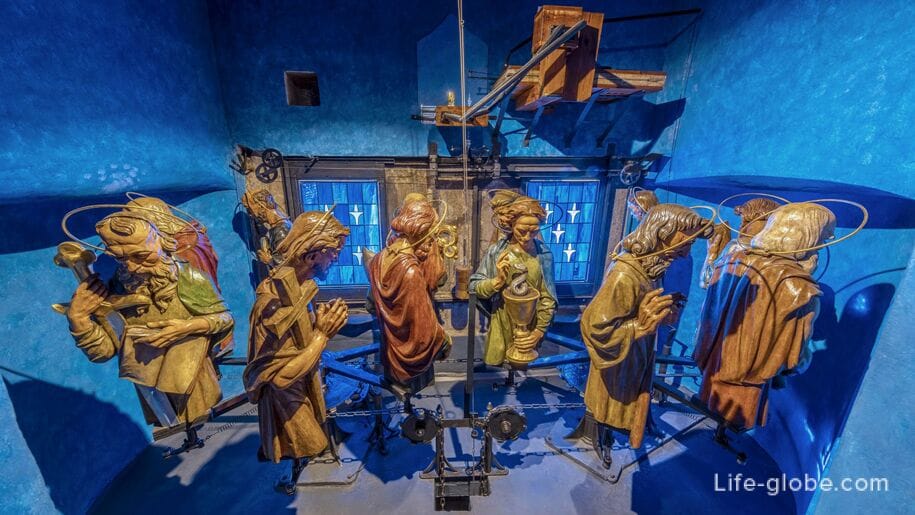
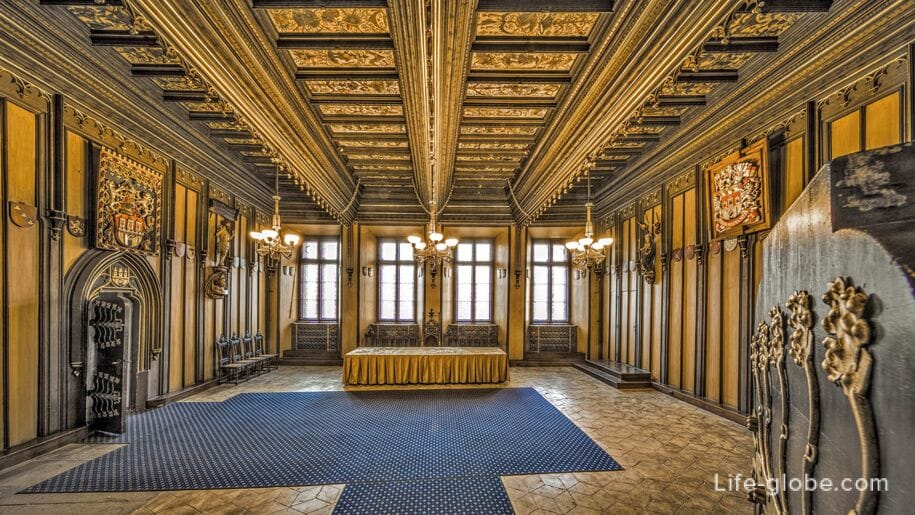
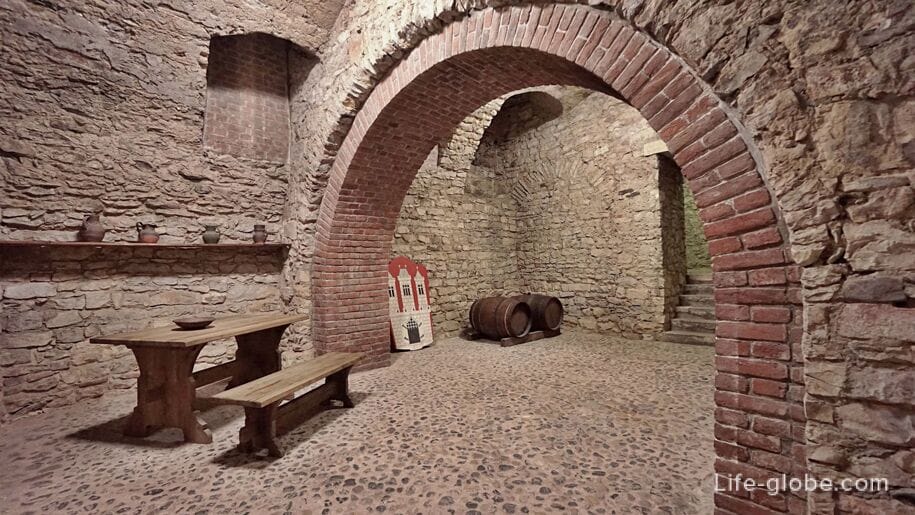
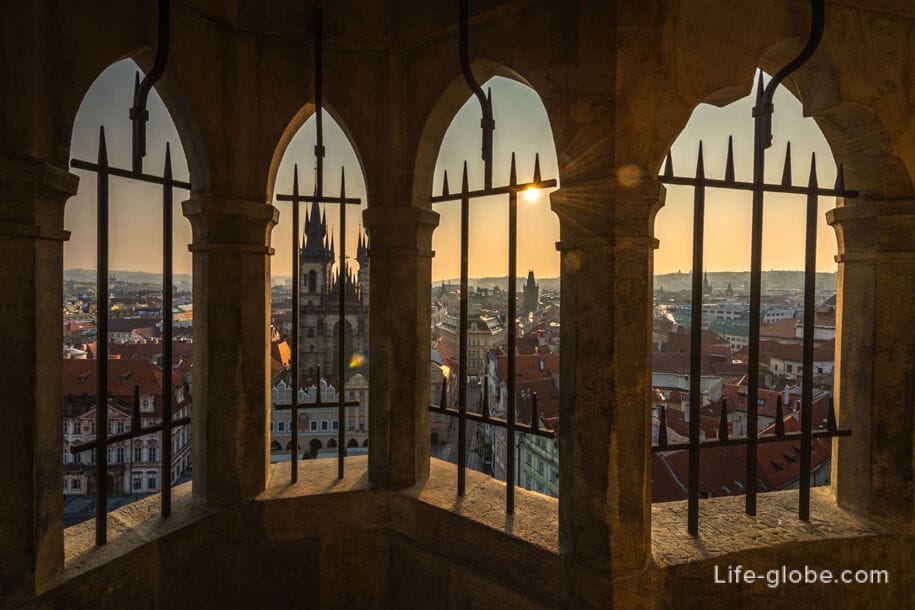
Address of the Old Town Hall: Staroměstske nam. 1/3, 110 00 Staré Město, Czech Republic.
Coordinates of the Old Town Hall: 50°05'13.0"N 14°25'15.0"E (50.086944, 14.420833).
All accommodation facilities in Prague (hotels, apartments, guest houses, etc.), including in the historical center of the city and more remotely from it, can be viewed and booked here




